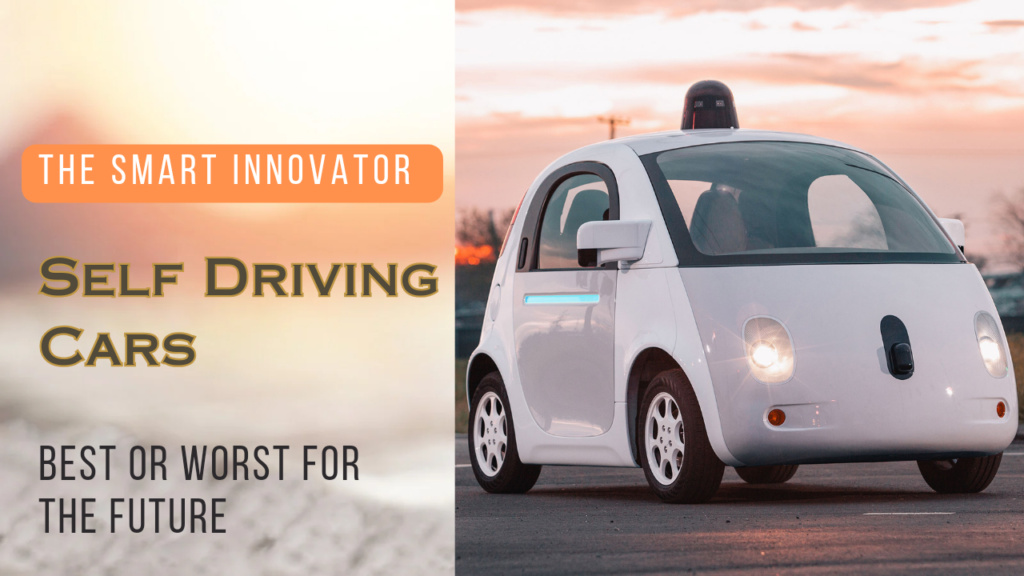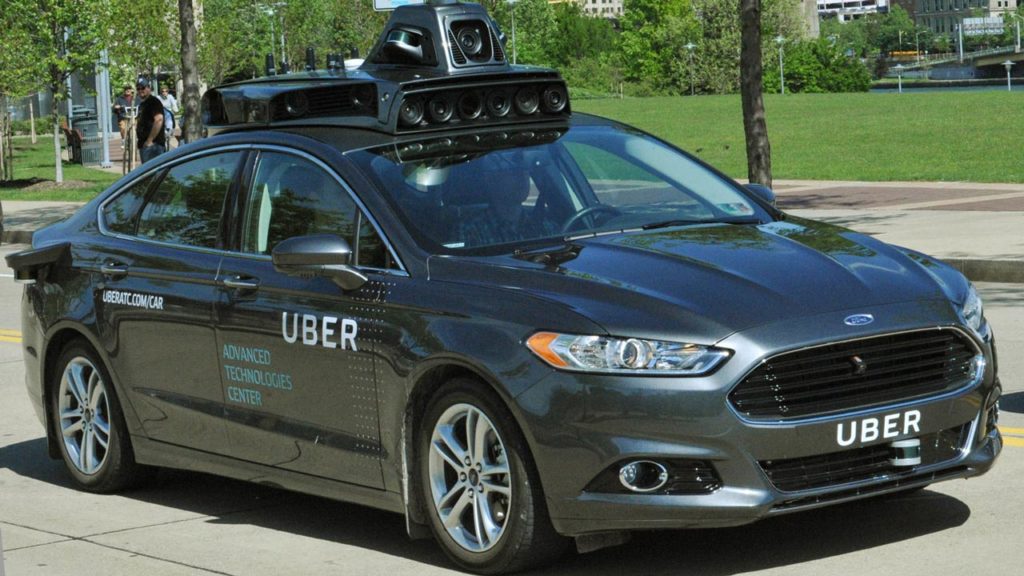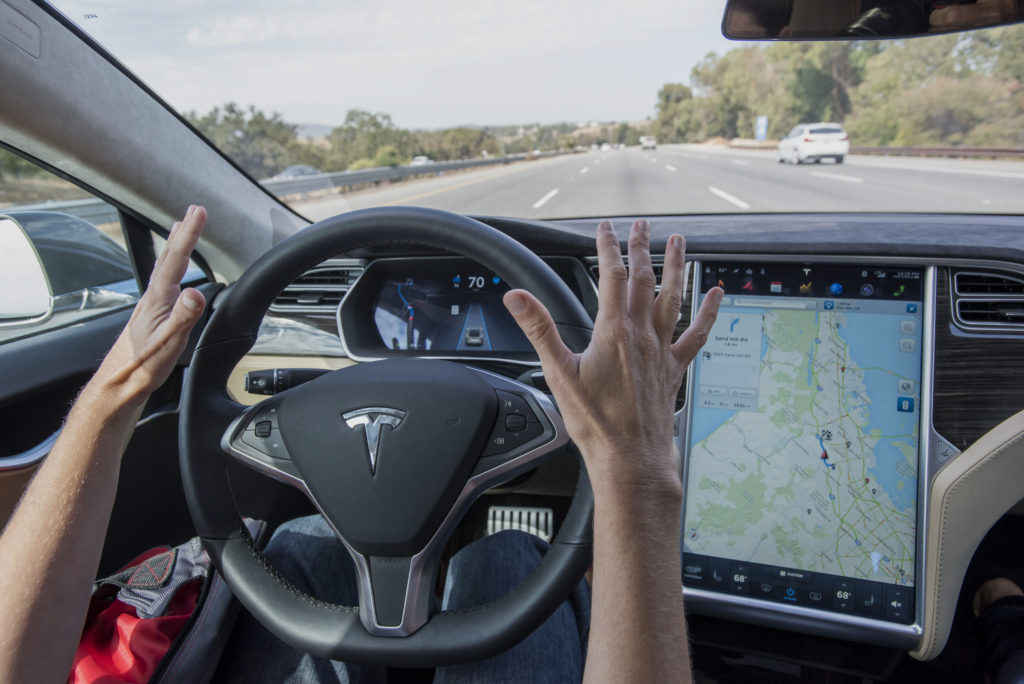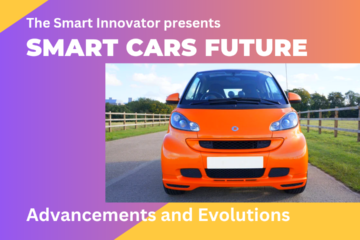Self Driving Cars : Best or Worst for the future?
Self-driving cars, also known as autonomous vehicles, have been a topic of great interest and debate in recent years. The concept of cars capable of navigating and operating without human intervention has captured the imagination of technology enthusiasts and car manufacturers alike. However, the prospect of self-driving cars raises questions and concerns about their impact on society, safety, and the future of transportation. In this article, we will explore the advantages and disadvantages of self-driving cars, shedding light on whether they are the best or worst solution for the future.
After artificial intelligence, it’s application, we are focused on and one of its appealing, practical implementation is the Self Driving Cars. Imagine you pick a cab for your office and it’s found out to be a driver less, how you then react?

Well Self Driving Cars: Best or Worst for the future? The article picks the right question to our readers, these days are not too far when this became reality. Whether it is Tesla or Uber all Vehicle maker companies put their fortune into this interesting field. Self Driving Cars are not just AI implementation it is also a balance example of a different kind of sensors which manages the driving on the behalf of the actual driver. Now is this approach is really helpful? We are discussing here the most interesting topic Self Driving Cars : Best or Worst for the future?
Introduction
Google Introduces it’s Self Driving Cars Project Waymo, Uber has its cars running So as we mentioned earlier How you will react when a driver less car pick you up from Home and drop you at your office. Two foremost emotions come to mind Excitement and fear, the very first emotion drives the research work on a sustainable speed and the second emotion keeps its speed on track otherwise we have already seen the cars around us. So the fear about the self driving car is not new.
Even the most amazingly accurate sensors can’t beat the experienced driver style, it will be the point of the debate, but the problem with artificial intelligence is that it needed to guide view even its most advanced form because the most common factor that its machine at the end of the day. We human wrote its core code, algorithms the test cases which become the root cause for its strong development.
Now if we talk about the technology we use in self driving, then we can find it is in its advanced form that can assure the riders for their safety because the very first reason for its existence is not just excitement but the safety due to daily records of accidents by human errors. A human can make mistake in possession of alcohol, sleepiness or other unconscious state, but if machine coded and supported with the balanced and advanced, accurate tech gadgets then it will be safer ride then we ever experienced.
In this debate we however, we move on both sides, but we convince with one common factor that the advanced tech is used because for the safety of the riders so if Self Driving Cars becomes the routine fashions in our daily travel life then it must be in human guidance we can’t just trial them in a vulnerable mode.
Have a look with Self Driving Cars:


Google Self Driving Car Introduction:
Waymo Car Experience:
What are the current self-driving cars?
There are several companies at the forefront of developing self-driving car technology. Some of the notable players in the field of autonomous vehicles include:
- 1. Waymo (Alphabet Inc.): Waymo is considered a leader in self-driving technology. They have been developing autonomous vehicles since 2009 and have conducted extensive testing on public roads. Waymo operates a commercial autonomous ride-hailing service in select areas.
- 2. Tesla: Tesla, an electric vehicle manufacturer, has incorporated advanced driver-assistance features in their vehicles, including Autopilot. While Tesla’s Autopilot is not fully autonomous, it offers features like lane centering, adaptive cruise control, and self-parking.
- 3. Cruise (General Motors): Cruise is an autonomous vehicle subsidiary of General Motors. They are focused on developing a self-driving ride-hailing service. Cruise has been testing their autonomous vehicles in San Francisco and plans to launch a commercial service in the future.
- 4. Aurora: Aurora is a technology company specializing in autonomous driving. They are working on developing a full-stack self-driving technology that can be integrated into various vehicle platforms. Aurora collaborates with automakers like Hyundai, Fiat Chrysler Automobiles, and others.
- 5. Mobileye (Intel Corporation): Mobileye, an Intel subsidiary, is known for its advanced driver-assistance systems. They provide a range of technologies such as camera-based perception, sensor fusion, and mapping, which are crucial for autonomous driving.
- 6. Zoox (Amazon): Zoox, acquired by Amazon in 2020, is focused on developing purpose-built autonomous vehicles for ride-hailing services. Their goal is to create a fully autonomous, zero-emission vehicle designed for urban environments.
- 7. Uber ATG: Uber’s Advanced Technologies Group (ATG) has been working on self-driving technology for several years. They have conducted autonomous vehicle tests and have been exploring ways to integrate autonomous vehicles into their ride-hailing platform.
These are just a few examples of companies involved in self-driving car development. The field is dynamic, with ongoing research, technological advancements, and collaborations that continue to shape the future of autonomous vehicles.
Are there any working self-driving cars?
Yes, there are working self-driving cars that are currently being tested and deployed in certain areas. While fully autonomous vehicles that can operate without any human intervention are still being developed and refined, there are several companies that have made significant progress in the field of self-driving technology.
One notable example is Waymo, a subsidiary of Alphabet Inc. (the parent company of Google). Waymo has been testing autonomous vehicles on public roads since 2009 and has amassed millions of miles of real-world driving experience. They have also launched a commercial autonomous ride-hailing service called Waymo One in select areas, allowing users to hail rides in self-driving cars.
Other companies, such as Cruise (owned by General Motors) and Aurora, have also been conducting extensive testing of self-driving cars. While these vehicles may still have safety drivers on board during testing, they are equipped with the necessary sensors, cameras, and computing systems to operate autonomously.
It’s important to note that the deployment of fully autonomous vehicles on public roads requires regulatory approval and meeting stringent safety standards. Companies are working closely with regulatory bodies and conducting thorough testing to ensure the safety and reliability of self-driving technology.
While these autonomous cars are not yet available for widespread consumer use, ongoing advancements in technology, infrastructure, and regulations are paving the way for a future where autonomous vehicles become a common mode of transportation.
What is the most popular self-driving car?
Most polpular self-driving car is also based on people’s choice. It is growing year by year more players coming into market as self driving cars market increases with Electric cars.
- Tesla Model 3
- Volvo XC40
- Lexus LS
- Audi A1 Sportback
- BMW iX
- Nissan Leaf
- Mercedes C-Class
- Volvo V60
- Ford Fiesta
- Volvo XC60
What are self-driving cars known for?
Self-driving cars, also known as autonomous vehicles, are known for several key characteristics and features:
- 1. Automation: Self-driving cars are designed to operate without direct human input. They leverage advanced technologies, sensors, and artificial intelligence to navigate, make decisions, and control the vehicle.
- 2. Safety: One of the primary goals of self-driving cars is to enhance road safety. By minimizing or eliminating human error, autonomous vehicles have the potential to reduce accidents caused by factors like distracted driving, fatigue, or impaired judgment.
- 3. Advanced Sensors: Self-driving cars are equipped with a variety of sensors, including cameras, radar, lidar (light detection and ranging), and ultrasonic sensors. These sensors provide a comprehensive view of the vehicle’s surroundings, allowing it to detect and respond to obstacles, pedestrians, other vehicles, and road conditions.
- 4. Artificial Intelligence: Autonomous vehicles utilize sophisticated algorithms and artificial intelligence to process sensor data, analyze the environment, and make real-time decisions. These algorithms learn from vast amounts of data and continually improve their driving capabilities.
- 5. Mapping and Localization: Self-driving cars rely on highly detailed and up-to-date maps to navigate accurately. These maps provide information about road geometry, traffic signs, speed limits, and other relevant details, enabling the vehicle to determine its precise location.
- 6. Connectivity: Autonomous vehicles often leverage connectivity to access real-time data, such as traffic conditions, weather updates, and map updates. Connectivity can enhance the vehicle’s decision-making and overall driving experience.
- 7. Potential for Efficiency: Self-driving cars have the potential to optimize traffic flow, reduce congestion, and enhance transportation efficiency. By utilizing advanced algorithms and coordinated communication between vehicles, autonomous driving systems can optimize routes and minimize travel times.
- 8. Future Mobility Solutions: Self-driving cars are viewed as a potential solution for future mobility challenges. They have the potential to transform transportation by offering shared autonomous ride-hailing services, reducing the need for individual car ownership, and providing mobility options to those unable to drive.
While self-driving cars are still being developed and tested, they hold the promise of revolutionizing the way we travel, improving safety, and transforming the future of transportation.
Best Self Driving Cars
Best Self Driving Cars are based on customer’s reviews around the world and popularity among them. Here are few best self driving cars:-
- Tesla model S
- Cadillac Escalade
- Genesis G90
- Ford F-150
- BMW X5
- Mercedes-Benz E-Class
- Volvo V90 Cross Country
- Nissan Ariya
- Infiniti QX50
- Volkswagen ID.4
Self Driving Cars Pros and Cons
Self driving cars are still getting popluarity and interest from people around the world. Many still figuring out whether it is good or bad for them with self driving cars Let’s figure it out below:-
Pros of Self-Driving Cars:
- Enhanced Safety:
- Self-driving cars have the potential to significantly reduce human error, which is a leading cause of accidents on the roads.
- With advanced sensors, cameras, and artificial intelligence, self-driving cars can constantly monitor their surroundings, make split-second decisions, and react faster than human drivers.
- This improved safety can lead to a substantial decrease in accidents and save countless lives.
- Increased Efficiency:
- These cars can optimize traffic flow by communicating with one another and coordinating their movements.
- With improved route planning and real-time data analysis, self-driving cars can minimize congestion, reduce travel time, and enhance overall transportation efficiency.
- This increased efficiency can result in reduced fuel consumption and lower carbon emissions.
- Accessibility and Inclusion:
- These cars hold the potential to revolutionize transportation for people with disabilities, the elderly, and those who are unable to drive.
- Autonomous vehicles can provide mobility solutions for individuals who currently face transportation challenges, allowing them to regain their independence and access necessary services.
- Time and Productivity:
- With these cars, commuters can utilize their travel time more effectively.
- The ability to work, relax, or engage in leisure activities during the commute can enhance productivity and improve the overall quality of life for individuals.
Cons of Self-Driving Cars:
- Technological Limitations:
- This car technology is still in its early stages, and there are ongoing challenges to overcome.
- Adverse weather conditions, complex road situations, and uncertain environments can pose significant obstacles for autonomous vehicles.
- The development of robust and reliable technology is crucial before widespread adoption can take place.
- Ethical and Legal Concerns:
- These cars raise ethical dilemmas related to decision-making in critical situations.
- Determining how autonomous vehicles should prioritize the safety of occupants versus pedestrians or handling moral dilemmas is a complex task.
- Legal frameworks and regulations need to be established to address liability and responsibility in the event of accidents involving self-driving cars.
- Job Displacement:
- The widespread adoption of self-driving cars may lead to job losses in the transportation industry.
- Taxi drivers, truck drivers, and delivery personnel could be affected as autonomous vehicles replace traditional driving roles.
- Efforts should be made to ensure a smooth transition and provide training or alternative employment opportunities for those impacted.
- Cybersecurity and Privacy:
- Self-driving cars rely heavily on connected technology, which introduces cybersecurity risks.
- Hackers gaining control over autonomous vehicles could pose serious safety concerns.
- Ensuring robust cybersecurity measures and safeguarding passenger privacy are essential for widespread acceptance of self-driving cars.
How do Self Driving Cars work?
Self-driving cars, also known as autonomous vehicles, rely on a combination of advanced technologies and sensors to navigate and operate without human intervention. Here is a simplified overview of how these cars work:
Sensors and Perception:
- These cars are equipped with various sensors, including cameras, lidar (light detection and ranging), radar, and ultrasonic sensors.
- These sensors continuously gather data about the car’s surroundings, detecting objects, road markings, traffic signs, and other vehicles in real-time.
- The sensors create a detailed and comprehensive understanding of the environment, forming the foundation for decision-making.
Mapping and Localization:
- Self-driving cars rely on highly detailed and up-to-date maps to navigate their surroundings accurately.
- These maps contain information about road geometry, traffic signs, speed limits, and other relevant details.
- The car uses its sensors to compare the real-time data with the preexisting map, allowing it to determine its precise location on the road.
Perception and Object Recognition
- Using the collected sensor data, the self-driving car’s onboard computer processes the information to identify and classify objects in its vicinity.
- Advanced algorithms analyze the sensor inputs to detect pedestrians, vehicles, cyclists, road markings, traffic lights, and other relevant elements.
- Object recognition helps the car understand the behavior and movement of different entities and make informed decisions.
Decision-Making and Planning:
- Based on the perception of the environment, the self-driving car’s computer system employs sophisticated algorithms to make real-time decisions.
- The system evaluates various factors, such as traffic conditions, road rules, speed limits, and the behavior of other road users.
- It then generates a safe and efficient plan, determining when to accelerate, decelerate, change lanes, or make turns.
Control and Actuation:
- Once the decision-making process is complete, the self-driving car’s control system translates the planned actions into physical movements.
- The control system communicates with the car’s steering, braking, and acceleration mechanisms to execute the planned maneuvers.
- Advanced drive-by-wire technology enables precise control over the vehicle’s movements based on the generated instructions.
Constant Monitoring and Redundancy:
- Throughout the entire self-driving process, the car’s computer system continuously monitors the performance of the sensors, algorithms, and control mechanisms.
- Redundant systems are often in place to ensure safety, with backup sensors, multiple computers, and fail-safe mechanisms.
- If any abnormalities or malfunctions are detected, the car can take appropriate actions, such as alerting the human driver or initiating a safe stop.
It is important to note that self-driving car technology is continuously evolving, and different manufacturers and developers may employ variations of the above steps. The aim is to create a reliable and safe autonomous driving experience, with the ultimate goal of reducing accidents, improving traffic flow, and enhancing overall transportation efficiency.
Are Self Driving Cars Safe?
Safety is a crucial consideration when it comes to self-driving cars. While autonomous vehicle technology has the potential to enhance road safety, there are ongoing challenges and concerns that need to be addressed.
Advantages for Safety:
- 1. Reduced Human Error: Self-driving cars have the potential to significantly reduce accidents caused by human error. The majority of accidents are attributed to factors like distracted driving, fatigue, or impaired driving. With autonomous vehicles, the reliance on human drivers is minimized, potentially leading to safer roadways.
- 2. Advanced Sensors and Perception: Self-driving cars are equipped with advanced sensors, such as cameras, radar, lidar, and ultrasonic sensors, which provide a comprehensive view of the vehicle’s surroundings. These sensors allow the car to continuously monitor the environment, detect objects, and react faster than human drivers, potentially avoiding collisions.
- 3. Improved Decision-Making: Autonomous vehicles use sophisticated algorithms and artificial intelligence to process sensor data and make real-time decisions. These systems can analyze vast amounts of information, including traffic conditions, road markings, and the behavior of other road users, to make informed decisions that prioritize safety.
- 4. Enhanced Compliance with Traffic Laws: These cars are programmed to strictly adhere to traffic laws, speed limits, and road regulations. They don’t experience distractions, fatigue, or emotions that may lead to violations. This adherence can contribute to safer driving practices.
Challenges and Concerns:
- 1. Technological Limitations: Self-driving technology is still evolving, and there are challenges to overcome. Autonomous vehicles need to operate reliably in various weather conditions, handle complex road situations, and respond appropriately in uncertain environments. Continued advancements are necessary to improve system robustness.
- 2. Ethical Dilemmas: These cars raise ethical considerations, especially in situations where accidents are unavoidable. Determining how autonomous vehicles should prioritize the safety of occupants versus pedestrians or handle complex moral dilemmas is a complex task that requires careful thought and societal consensus.
- 3. Cybersecurity Risks: Connected autonomous vehicles introduce potential cybersecurity vulnerabilities. Hackers gaining control over the vehicle’s systems could pose safety risks. Robust cybersecurity measures must be in place to protect against unauthorized access and ensure the safety of autonomous vehicles.
- 4. Regulatory and Legal Frameworks: The development and deployment of self-driving cars require comprehensive regulations and legal frameworks. These frameworks need to address liability, responsibility, and standards to ensure public safety and establish guidelines for autonomous vehicles’ operation.
It is worth noting that extensive testing, validation, and regulatory approvals are necessary before widespread adoption of self-driving cars. The goal is to strike a balance between leveraging the potential safety benefits of autonomous vehicles while mitigating risks and ensuring robust safety measures are in place.
Conclusion
The future of self-driving cars is a topic of immense debate and consideration. While they offer significant advantages in terms of safety, efficiency, accessibility, and productivity, there are also challenges and concerns that need to be addressed. As technology continues to advance and regulations evolve, it is crucial to strike a balance between embracing the potential benefits of self-driving cars while mitigating risks and ensuring a smooth transition. The best or worst outcome for the future of self-driving cars will depend on our ability to navigate these challenges, harness the advantages, and prioritize safety, ethical considerations, and societal well-being.
So final words about this article is that we really appreciate the efforts for the safety of the humans in road accidents by technology driven, self driving cars, but we also support the human observations during the whole process. Please share your comments and queries regarding the article in comment section also share it with your friends and colleagues.
Frequently Asked Questions
Autonomous cars also knowns as self driving cars are the cars which needed no or minimal support of a driver to ride a car.
Yes! Defenitely there are several option from Tesla, Ford, BMW etc. available in the market.






0 Comments